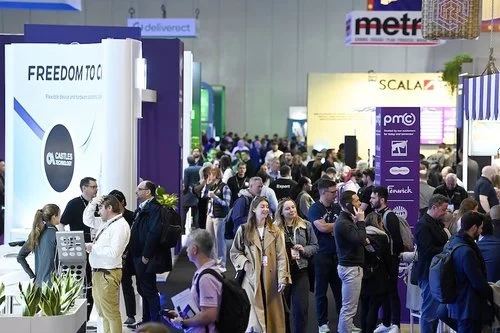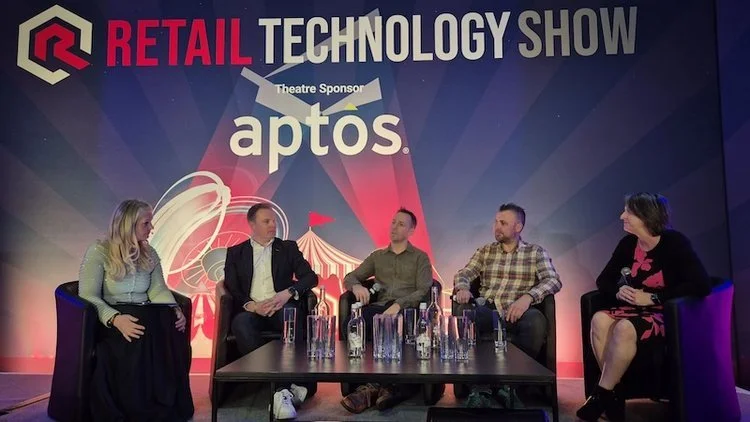How background music drives sales and shapes the retail experience
Music is more than a background feature in retail environments.
It has a measurable influence on how long customers stay in-store and how much they spend. The right soundtrack, played at the right time, can increase dwell time, influence customer mood, and encourage larger purchases. For retail businesses, understanding how to schedule and tailor music isn’t just a nice-to-have, it’s part of a smarter sales strategy.
Timing Is Everything
Retail traffic ebbs and flows throughout the day. Morning visitors may be browsing casually, while evening shoppers are often more purposeful. By aligning the energy of your playlist with customer behaviour at specific times, music can gently guide how people interact with your space.
Softer, slower tracks may suit quieter weekday mornings, creating a relaxed browsing atmosphere. As foot traffic builds, shifting to more upbeat music can match the energy in-store and help maintain a vibrant ambiance.
Using a commercial music service that allows detailed scheduling helps ensure that music complements the moment. With these tools, businesses can fine-tune playlists based on time of day, day of the week, or even seasonal trends. This makes music an active contributor to the customer journey.
Creating the Right Atmosphere to Shop
Customers are more likely to linger in a store where they feel comfortable. Music plays a key role in creating that sense of ease. Genres, tempo, and volume all affect how people perceive their environment. For instance, upbeat pop music might encourage faster decisions and shorter visits, while chill electronic tracks may invite longer browsing.
This doesn’t mean one type of music fits all. A high end boutique will likely opt for a different tone than a sporting goods store. The key is to align your in-store music with your brand identity. Are you offering an exciting, energetic shopping experience? Or something more calm and curated? Once the goal is clear, music becomes a tool to support it.
It’s not just about playing music - it’s about playing the right music at the right moment. Well curated music for retail stores helps bridge the gap between atmosphere and intention.
Influencing Basket Size with Background Music
While atmosphere affects how long customers stay, it also plays a role in what they buy. Studies have shown that slower music can lead to more thoughtful browsing, which often translates to increased basket size. Similarly, music that fits the product category or matches the demographic of your target customer can subtly influence decision-making.
For example, stores catering to Gen Z shoppers may benefit from trending tracks or playlists that align with current social media audio trends. Meanwhile, shops selling luxury items may benefit from instrumental or minimalist soundscapes that support a calm, high-end feel.
Sound doesn’t work in isolation. It pairs with store layout, lighting, and customer service to create a full sensory experience. When these elements work together, shoppers feel more connected to the space and more likely to engage with products.
The Role of Consistency Across Locations
For retailers operating multiple locations, consistency is important. Customers expect a unified brand experience. Background music can be part of that continuity. Using a platform that allows centralised scheduling ensures that each location delivers a similar ambiance while still allowing for localised variation where appropriate.
This centralised approach reduces guesswork at the store level and allows brand managers to stay in control. It also allows businesses to test the impact of certain playlists on sales and adjust accordingly.
Why Licensing Matters
Streaming music in a business without the correct licensing can lead to hefty penalties. Personal streaming platforms like Spotify and Apple Music don’t include the performance rights needed for commercial use. A licensed music platform takes care of those requirements, ensuring businesses are legally compliant.
More than just staying within the law, using a licensed service means gaining access to a wider range of tracks curated specifically for commercial spaces. These are designed to be non-disruptive, mood-enhancing, and brand appropriate.
Music That Works as Hard as You Do
Retail is a competitive space. From product curation to staff training, every detail matters. Music shouldn’t be an afterthought. With the right tools and thoughtful scheduling, background music can be part of a broader effort to influence customer behaviour and drive results.
By using a purpose built in-store music solution, retailers can stay focused on what they do best, while the music quietly supports every interaction, decision, and sale. Thoughtfully scheduled music won’t shout for attention, but its effects will speak volumes.































Continue reading…